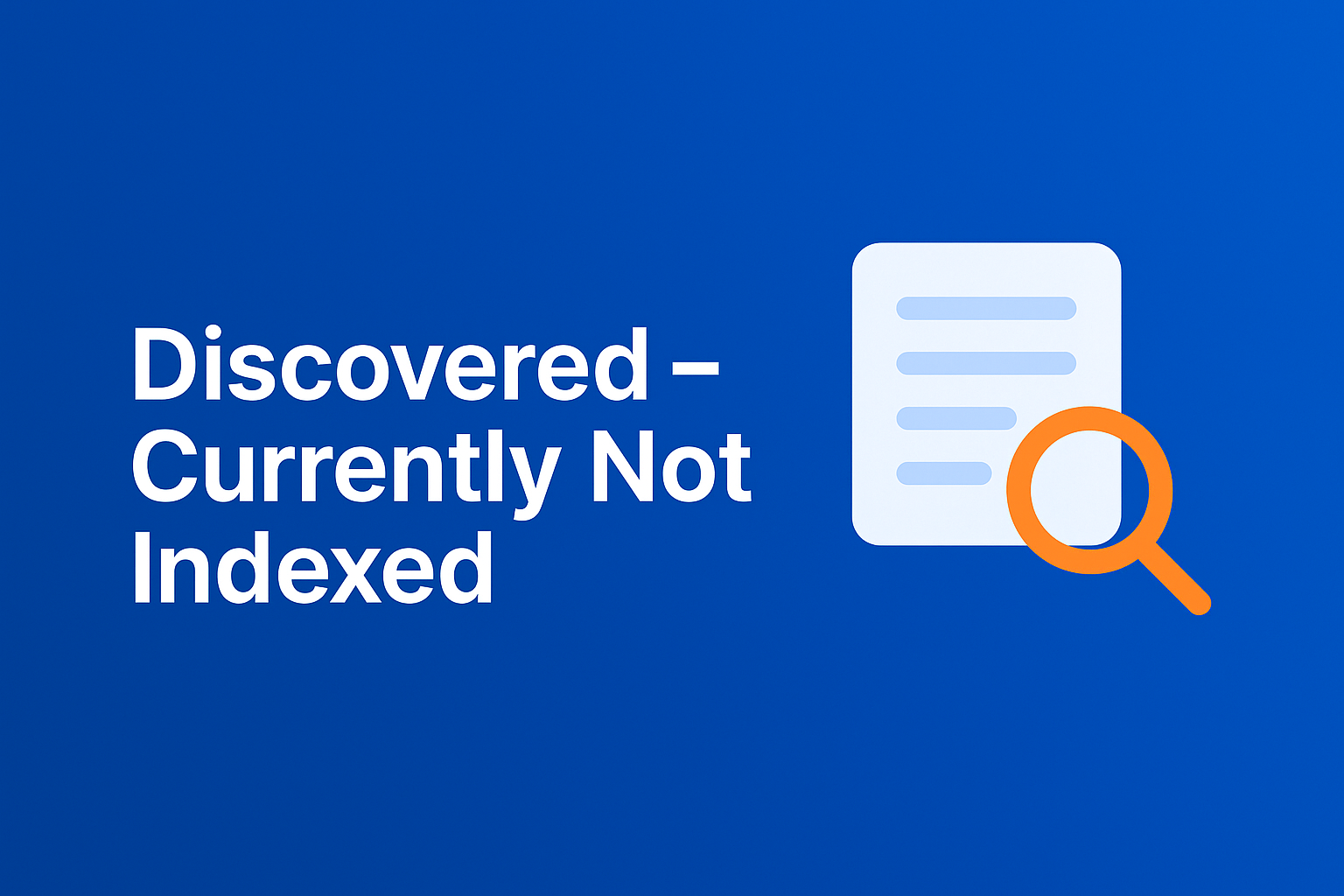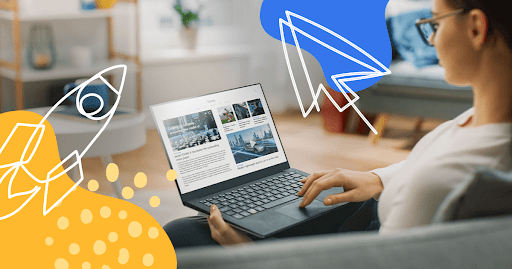Mar 06, 2025
Discovered – Currently Not Indexed: What It Means & How to Fix It

Have you ever published a new page, submitted it in Google Search Console (GSC), and found that it’s discovered – currently not indexed? You’re not alone.
This message can feel frustrating—especially when your content is live, optimized, and waiting to appear in Google search results. But don’t worry: this guide will help you understand exactly what it means and how to fix it—step by step.
Let’s decode this issue and help Google not just discover your content—but index and rank it.
What Does “Discovered – Currently Not Indexed” Mean in Google Search Console?
The “discovered – currently not indexed” status in GSC simply means that Google is aware of your URL (it discovered it through internal links, sitemap, or crawling), but it hasn’t crawled or indexed it yet.
The Difference Between Crawled and Indexed
- Crawled: Googlebot visited the page and read its content.
- Indexed: Google added the page to its search index, making it eligible to appear in search results.
If your page is discovered but not crawled, it means it’s waiting in a queue, often due to crawl prioritization or other technical or quality factors.
Why Google Might Not Index Every URL It Discovers
Google explicitly states that:
“Google doesn't index all the content it discovers.”
Why? Because not every page is worth indexing. Reasons can range from low content quality, crawl budget issues, duplicate content, or technical blocks.
Common Reasons for the “Discovered – Currently Not Indexed” Status
Here are the most common causes for this issue:
1. Low-Quality or Thin Content
Pages with minimal or repetitive content are often deprioritized for indexing. Google wants unique, useful, and in-depth information that satisfies search intent.
2. Crawl Budget Limitations
Googlebot assigns each site a “crawl budget” (especially for large sites). If you have too many pages or frequent changes, Google may delay or skip crawling lower-priority URLs.
3. Server Overload or Timeout Issues
If your server was slow, temporarily down, or blocked Googlebot during its crawl attempt, the URL may remain in “discovered” state.
4. Internal Linking Problems
If the page isn’t linked from other important pages on your site, it may not be considered important enough to crawl.
Related: On-Page SEO Checklist – Improve internal linking and page relevance.
5. Duplicate or Canonicalization Conflicts
If your page is seen as duplicate (or canonicalized to another page), Google may avoid indexing it.
6. Robots.txt or Meta Tags Blocking Indexing
Check if your robots.txt file or meta tags are accidentally disallowing crawling or indexing.
How to Fix “Discovered – Currently Not Indexed” in Google Search Console
Let’s look at the exact steps to help Google crawl and index your content.
Step 1 – Check Indexing Status in GSC Coverage Report
Go to GSC > Pages > "Why pages aren’t indexed" > Filter to see the affected URLs.
Click on a specific URL > “Inspect URL” to see the live test results.
Step 2 – Ensure Content Quality and Uniqueness
Make sure the content is original, detailed, and optimized. Avoid thin pages with little value.
Related: How Content Refreshing Boosted Traffic by 120% in 30 Days
Step 3 – Improve Internal Linking Structure
Link to the page from other relevant, high-authority pages on your website. This signals importance to Googlebot.
Example: From your Technical SEO Checklist, link to new content naturally.
Step 4 – Submit URL for Indexing via Google Search Console
After fixing the content or linking, go to GSC and “Request Indexing” via the URL Inspection Tool.
⚠️ Don’t abuse this feature—only use it for important or fixed pages.
Step 5 – Inspect Robots.txt and Meta Tags
Use the GSC inspection tool to check for:
- No-Index meta tag
- Blocked by robots.txt
- Canonical tags pointing elsewhere
Step 6 – Monitor Crawl Stats and Server Response
Use the Crawl Stats report (under GSC > Settings) to identify slow server response, DNS issues, or low crawl rates.
Tip: Use tools like PageSpeed Insights or [Lighthouse] to test load time.
Frequently Asked Questions (FAQs)
What does “Discovered – Currently Not Indexed” mean in Google Search Console?
It means Google has found your URL but hasn’t crawled or indexed it yet.
How long does it take Google to index a discovered page?
It can take a few hours to several weeks, depending on page quality, crawl budget, and site authority.
How do I fix the “Discovered – Currently Not Indexed” error?
Improve content, link internally, check robots.txt/meta, and use GSC's “Request Indexing.”
Why does Google discover my page but not index it?
Most likely reasons include thin content, poor linking, or crawl prioritization issues.
Is it normal for new websites to have discovered but not indexed pages?
Yes, especially for new or low-authority domains. Build trust and improve technical SEO.
Will changing internal links help get a page indexed?
Yes. Linking from strong internal pages improves crawlability and indexing chances.
Should I delete pages that remain in ‘discovered’ status for a long time?
If the page has no value or duplicates another, yes. Otherwise, improve and resubmit.
Final Thoughts: Getting Your Pages Crawled and Indexed Faster
The “discovered – currently not indexed” message is common—and fixable. Focus on content quality, internal linking, and technical health.
Once you resolve these issues, indexing usually follows within days.
If you need help with crawling, indexing, or ranking, explore our specialized SEO Services or Technical SEO solutions to ensure your pages don’t just sit waiting—but show up where they belong: in search results.




